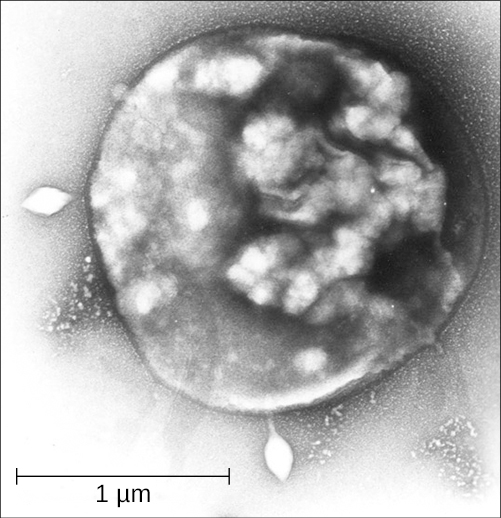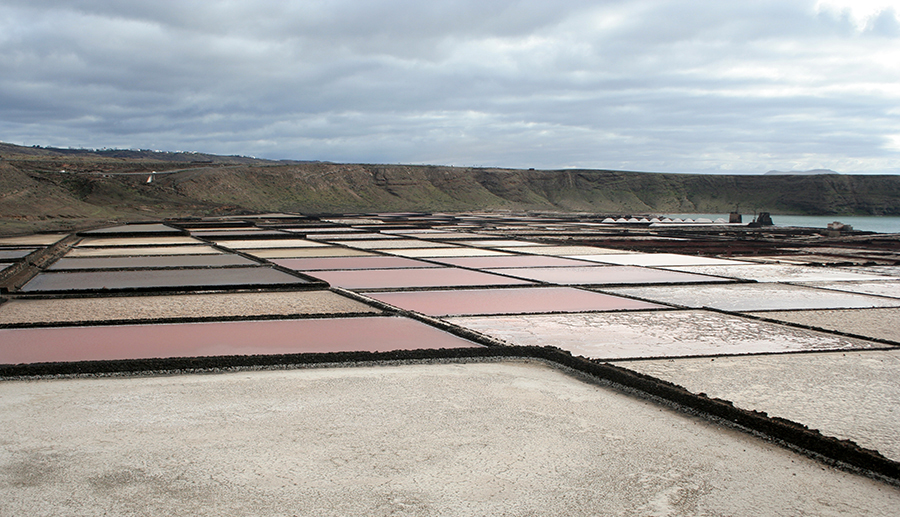| << Chapter < Page | Chapter >> Page > |

Another genus, Thermoproteus , is represented by strictly anaerobic organisms with an optimal growth temperature of 85 °C. They have flagella and, therefore, are motile. Thermoproteus has a cellular membrane in which lipids form a monolayer rather than a bilayer, which is typical for archaea. Its metabolism is autotrophic. To synthesize ATP, Thermoproteus spp. reduce sulfur or molecular hydrogen and use carbon dioxide or carbon monoxide as a source of carbon. Thermoproteus is thought to be the deepest-branching genus of Archaea, and thus is a living example of some of our planet’s earliest forms of life.
The phylum Euryarchaeota includes several distinct classes. Species in the classes Methanobacteria, Methanococci, and Methanomicrobia represent Archaea that can be generally described as methanogens. Methanogens are unique in that they can reduce carbon dioxide in the presence of hydrogen, producing methane. They can live in the most extreme environments and can reproduce at temperatures varying from below freezing to boiling. Methanogens have been found in hot springs as well as deep under ice in Greenland. Some scientists have even hypothesized that methanogen s may inhabit the planet Mars because the mixture of gases produced by methanogens resembles the makeup of the Martian atmosphere. R.R. Britt “Crater Critters: Where Mars Microbes Might Lurk.” http://www.space.com/1880-crater-critters-mars-microbes-lurk.html. Accessed April 7, 2015.
Methanogens are thought to contribute to the formation of anoxic sediments by producing hydrogen sulfide, making “marsh gas.” They also produce gases in ruminants and humans. Some genera of methanogens, notably Methanosarcina , can grow and produce methane in the presence of oxygen, although the vast majority are strict anaerobes.
The class Halobacteria (which was named before scientists recognized the distinction between Archaea and Bacteria) includes halophilic (“salt-loving”) archaea. Halobacteria require a very high concentrations of sodium chloride in their aquatic environment. The required concentration is close to saturation, at 36%; such environments include the Dead Sea as well as some salty lakes in Antarctica and south-central Asia. One remarkable feature of these organisms is that they perform photosynthesis using the protein bacteriorhodopsin , which gives them, and the bodies of water they inhabit, a beautiful purple color ( [link] ).

Notable species of Halobacteria include Halobacterium salinarum , which may be the oldest living organism on earth; scientists have isolated its DNA from fossils that are 250 million years old. H. Vreeland et al. “Fatty acid and DA Analyses of Permian Bacterium Isolated From Ancient Salt Crystals Reveal Differences With Their Modern Relatives.” Extremophiles 10 (2006):71–78. Another species, Haloferax volcanii , shows a very sophisticated system of ion exchange, which enables it to balance the concentration of salts at high temperatures.
Archaea are not known to cause any disease in humans, animals, plants, bacteria, or in other archaea. Although this makes sense for the extremophiles, not all archaea live in extreme environments. Many genera and species of Archaea are mesophiles, so they can live in human and animal microbiomes, although they rarely do. As we have learned, some methanogens exist in the human gastrointestinal tract. Yet we have no reliable evidence pointing to any archaean as the causative agent of any human disease.
Still, scientists have attempted to find links between human disease and archaea. For example, in 2004, Lepp et al. presented evidence that an archaean called Methanobrevibacter oralis inhabits the gums of patients with periodontal disease. The authors suggested that the activity of these methanogens causes the disease. P.W. Lepp et al. “Methanogenic Archaea and Human Gum Disease.” Proceedings of the National Academies of Science of the United States of America 101 no. 16 (2004):6176–6181. However, it was subsequently shown that there was no causal relationship between M. oralis and periodontitis. It seems more likely that periodontal disease causes an enlargement of anaerobic regions in the mouth that are subsequently populated by M. oralis . R.I. Aminov. “Role of Archaea in Human Disease.” Frontiers in Cellular and Infection Microbiology 3 (2013):42.
There remains no good answer as to why archaea do not seem to be pathogenic, but scientists continue to speculate and hope to find the answer.
________ is a genus of Archaea. Its optimal environmental temperature ranges from 70 °C to 80 °C, and its optimal pH is 2–3. It oxidizes sulfur and produces sulfuric acid.
Sulfolobus
________ was once thought to be the cause of periodontal disease, but, more recently, the causal relationship between this archaean and the disease was not confirmed.
Methanobrevibacter oralis
What accounts for the purple color in salt ponds inhabited by halophilic archaea?
What evidence supports the hypothesis that some archaea live on Mars?

Notification Switch
Would you like to follow the 'Microbiology' conversation and receive update notifications?